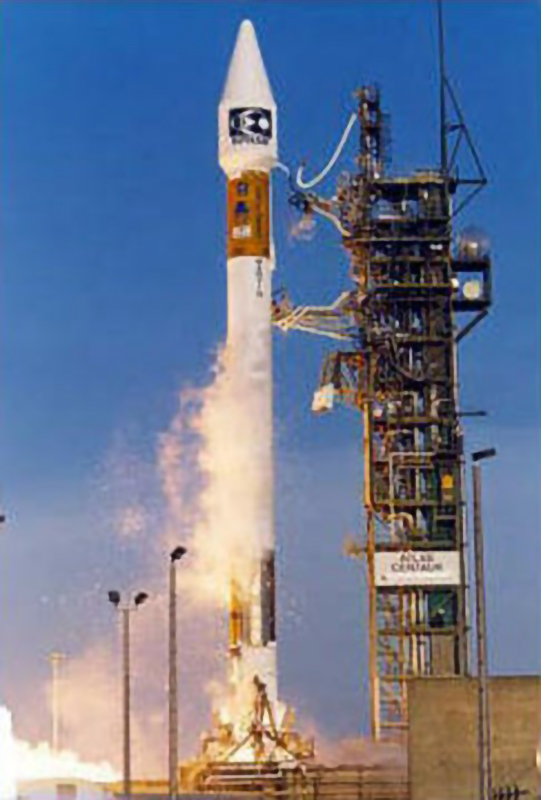ATLAS IIIA-CENTAUR FACT SHEET
By Cliff Lethbridge

Atlas IIIA-Centaur Launch, Photo Courtesy Lockheed-Martin
Classification: Space Launch Vehicle
Length: 170 feet, 2 inches
Diameter: 10 feet
Date of First Cape Canaveral Launch: May 24, 2000
Date of Final Cape Canaveral Launch: March 13, 2004
Number of Cape Canaveral Launches: 2
In November, 1995 Lockheed-Martin approved plans for a new space launch vehicle called the Atlas IIAR-Centaur. The vehicle design called for some revolutionary innovations for the Atlas program. The one and one-half stage booster/sustainer engine configuration, a trademark of the Atlas for over 40 years, would be replaced by a single stage booster design to make the rocket more efficient and cost-effective. A follow-up Atlas IIAR-Centaur decision announced by Lockheed-Martin in January, 1996 would confound Atlas missilemen of a bygone era, who sought to validate the Atlas missile as a possible means of laying waste to the former Soviet Union. The company decided that first stage propulsion for the Atlas IIAR-Centaur would be provided by a Russian RD-180 engine, a two-chamber version of the four-chamber RD-170 engine built by NPO Energomash of Russia. The Atlas IIAR-Centaur was renamed Atlas III-Centaur in April, 1998. Two variants emerged – the Atlas IIIA-Centaur and the Atlas IIIB-Centaur. Of these, the Atlas IIIA-Centaur was the first to be introduced and launched from Cape Canaveral.
As envisioned, first stage propulsion for the Atlas IIIA-Centaur was provided by a Russian RD-180 engine. The dual-chamber engine was fed by a combination of liquid oxygen and RP-1 (kerosene) liquid fuel. The first stage featured a liquid oxygen tank extended 10 feet longer than that of the Atlas IIAS-Centaur. The first stage was capable of producing a liftoff thrust of about 860,200 pounds. Switching to a single-stage booster concept for the Atlas IIIA-Centaur resulted in dramatic improvements in production, operation and reliability. Remarkably, the Atlas IIIA-Centaur first stage had about 10,000 fewer parts than the Atlas IIAS-Centaur booster/sustainer engine combination. Second stage propulsion for the Atlas IIIA-Centaur was provided by a single-engine Centaur, powered by a Pratt and Whitney RL 10A-4-1 engine fed by a combination of liquid oxygen and liquid hydrogen. The second stage was capable of producing a thrust of about 22,300 pounds. The Atlas IIIA-Centaur could employ either a large or extended large payload fairing. Each payload fairing had a usable diameter of about 12 feet, 6 inches. The Atlas IIIA-Centaur was capable of carrying a maximum 19,004-pound payload to Low Earth-orbit or a maximum 8,950-pound payload to Geostationary Transfer Orbit.


